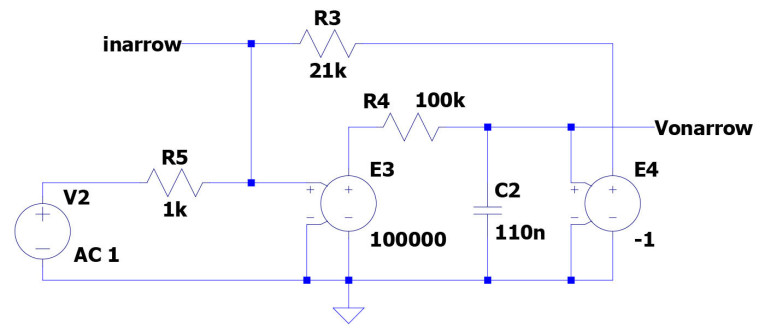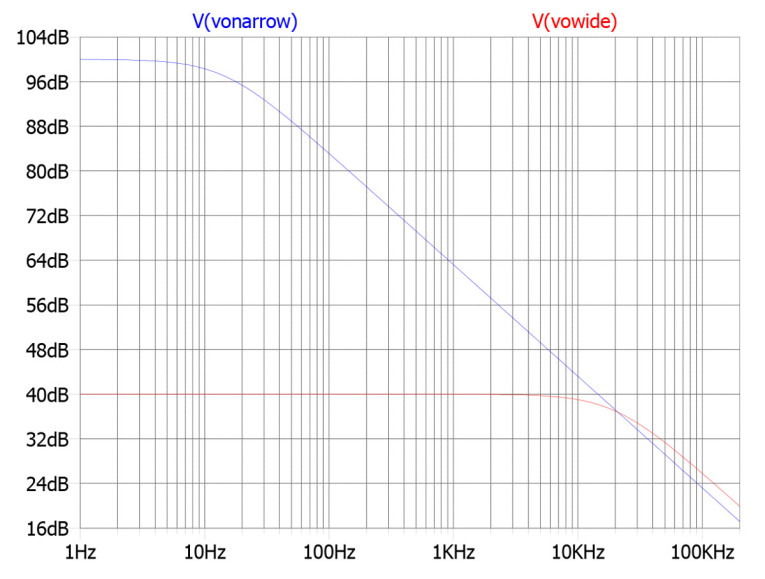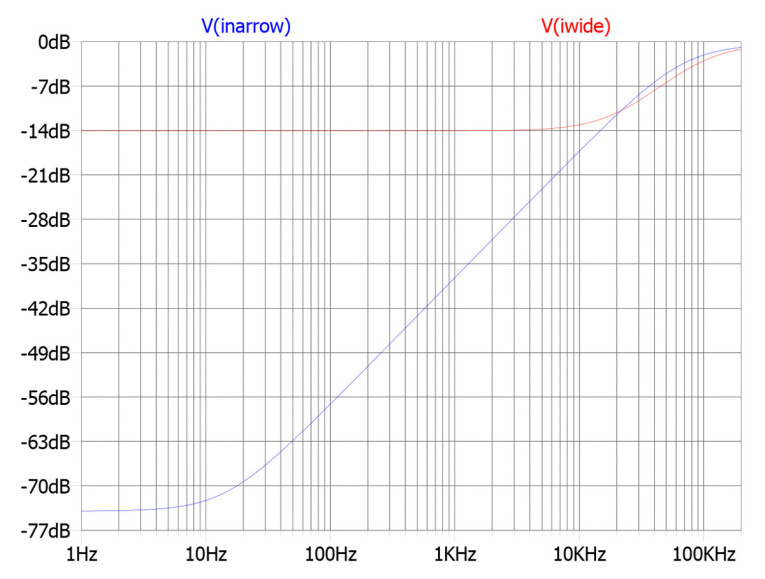The subject came up at the 154th Audio Engineering Society (AES) convention in Helsinki, Finland. Audio amplifiers are basically integrators or, if you will, low-pass filters. That means that at some frequency, their open-loop gain starts to fall off. With that, the loop gain available for feedback also starts to fall off, leading to a diminishing of the curative effects of feedback: distortion starts to rise, gain accuracy starts to drop, output impedance starts to go up, etcetera.
There are roughly two schools of thought: You start with an extremely high open-loop gain that rolls off at a relatively low frequency, so that you have a lot of excess gain for feedback over the audio band (narrow band open loop). Or you start with a moderate loop gain that stays flat up to say the upper audio frequency of 20kHz, then rolls off (wideband open loop).

One effect of the open-loop gain roll off is that the (differential) input voltage to the amplifier, for a given output voltage, must rise with frequency. This increase in input signal level generally increases distortion as more of the nonlinear gain of the amplifier is exercized. In the narrow band case, as the feedback starts to roll off early, the input level also starts to rise early, at a much lower frequency, than in the wideband case. The premise of the discussion was that this is a “double whammy” as, in the narrow band case, the distortion due to higher input levels would rise faster than expected as the amplifier input nonlinearity itself rises with input signal level. This effect, if indeed true, might influence the choice for one or the other open loop bandwidth case as mentioned above.
The purpose of this essay is to try to untangle this and provide a fair comparison between the two cases as far as distortion is concerned.
Figure 1 shows an instance of the two cases, while Figure 2 shows the two open-loop curves, graphed with R3 and R6 from Figure 1 removed. To ensure a level playing field, I have set the gains and roll off in each case so both have around 37dB open-loop gain at 20kHz (Fc of the wideband case) and a closed-loop gain with resistors R3 and R6 as shown, of 26dB.


In Figure 2, both circuits show a first-order roll-off of 6dB/octave; one has a flat response up to that 20kHz point, while the other has a very high loop gain at 20Hz of circa 100dB, again rolling off to 37dB at 20kHz. We also assume a required closed-loop gain of 26dB, leaving 11dB for feedback at 20kHz.

Figure 3 below shows the closed-loop responses, and thanks to the feedback, these are roughly the same.[1]

Next, we will plot the input voltage of the amplifier in the two cases, for an output signal level of 20Vrms. For the wideband case, that input voltage needs to be 200mVrms, up to the 20kHz roll off frequency.
For the narrowband case, below 20Hz, the input voltage for the same 20Vrms output will only be about 200µVrms and will rise with frequency until it also reaches 200mVrms at 20kHz. The two plots are shown in Figure 4.
The input voltage in the narrow band case at no point rises above that of the wideband case. Therefore, the narrowband case does not cause higher distortion than the wideband case by exercising a larger range of the input non-linearity. There is no advantage in using a wider open-loop bandwidth in this context. If there is a “double whammy” effect, the victim is the wideband case, as it has consistently higher input voltages. The input voltage is as high in the whole audio band as it is at 20kHz, while in the narrowband case, the input level is always lower in the audio band, up to 20kHz where it is the same for both.

The conclusion must be that for highest distortion reduction in the audio band, a narrow open-loop very high gain frequency response that starts to roll off at a relatively low frequency is to be preferred over a lower gain flat open loop response, if both have the same open-loop gain at 20kHz. All other things being equal of course, which they might not; there may be other reasons to choose one or the other configuration. But based on the premise stated at the beginning, the choice would clearly be the narrow band case.
Comments invited: techeditor@audioxpress.com
[1] At 20kHz, the narrow band case is already at its flat portion, while the wideband case just started to roll off so there are some minor differences, which are also visible in Figure 4. However, these do not change the conclusions.
This article was originally published in The Audio Voice newsletter, (#426), June 15, 2023.







